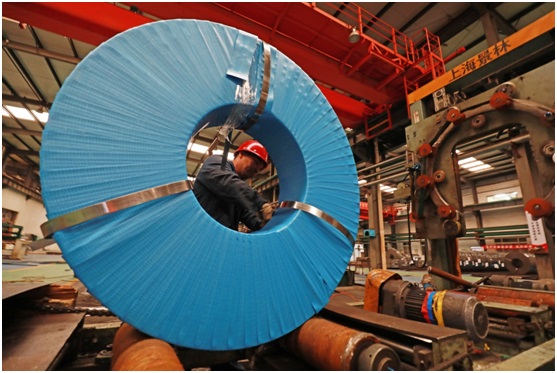By Wu Qiuyu, People’s Daily
China’s tax and fee cuts totaled 742.8 billion yuan (about $105 billion) in the first quarter this year, according to a recent press conference held by the country’s top tax watchdog briefing the country’s tax reduction progress and improvement of tax services.
Data released by the State Taxation Administration (STA) indicated that the preferential tax and fee measures unveiled in 2020 to support economic development and the containment of the COVID-19 epidemic cut a total of 318.2 billion yuan, while another 424.6 billion yuan were reduced as a result of the implementation of a larger scale of tax and fee cut policies rolled out since last year.
Cai Zili, director of the revenue planning and accounting department of the STA, said China also introduced taxation policies such as expanding automobile consumption, continuing inclusive finance and preferential tax under the Western Development strategy, as well as various measures to help market players, especially micro, small and medium-sized enterprises, overcome difficulties.
Tax and fee reduction has brought rapid effects and accelerated the resumption of work and production, said Gong Huiwen, a researcher with the tax science and research institute under the STA.
The country rolled out 23 preferential tax and fee policies in five batches, which offered strong support for epidemic control, as well as economic and social development, Gong added.
The tax and fee reduction policies, together with the shrunk tax base in the epidemic, brought down China’s tax revenue (after deducting export tax rebates) by 16.4 percent from a year ago to 3.48 trillion yuan.
The tax revenue drop was expected to significantly narrow in the second quarter, as China’s economic and social development gradually returns to normal in regular epidemic prevention and control, and the resumption of life and production was accelerating, Cai said.
Big data was employed by the STA to monitor enterprises’ resumption of production and sales based on their daily performance.
Statistics revealed that Chinese companies’ sales revenue recovered to 95 percent around this same time a year ago, and the figure was rising week by week since Feb. 20, when the pandemic eased and work resumed.
From Feb. 10 to 14, Chinese enterprises recovered 20 percent of their revenue from a year ago, and further improved the percentage to 62.2 and 82.3 at the end of February and March. The figure hit 94.8 percent last week.
The manufacturing sector saw a relatively rapid resumption of production and sales, with nearly half of the companies performing even better compared to this period last year. Their sales revenue reached 99.1 percent compared to this period in 2019, 21.8 percentage points higher from March, and 4.3 percentage points higher than the overall level. Among the sector’s 31 categories, 15 have fully recovered their sales revenue last year.
The sales revenue of China’s high-tech industries stood at 102.6 percent of the comparable income from last year, while those of new businesses, such as civil telecommunication services, internet services and digital cultural services accounted for 138 percent, 116 percent and 105 percent compared to this period in 2019, respectively.
Besides, China’s transportation and logistics generally returned to normal. Sales revenue in the sector amounted to 96.6 percent of last year’s comparable income, among which postal and express delivery, water transportation and warehousing reached 122.5 percent, 106.6 percent and 101 percent, respectively. Sales revenue of the road freight transport sector, which accounts for nearly 50 percent of the country’s transport industry, amounted to 98.7 percent of that of comparable period last year.
The household consumption potential in the country was further released, with an uptick in the consumption of products. Sales revenues of retail stores, food and beverage industry, and pharmaceutical retail hit 105.6 percent, 117.6 percent and 121.1 percent of last year’s comparable income, respectively.
Chinese tax authorities delivered a list of 6 million enterprises in need of assistance to banks in Q1, and 750,000 loans totaling 180 million yuan were granted to small and micro enterprises across the country under a “bank-tax” interaction program, more than half of the 2019 number.
After extending the tax declaration periods for February, March and April, China further extended that of this month to May 22 considering the impacts from the pandemic and the May Day holiday.
Contactless channels became the first choice for taxpayers to handle tax-related matters. 92.65 percent of taxpayers handled relevant businesses through online tax system, and more than 97.3 percent of them were satisfied with it.
An employee of a strip steel manufacturer in Luannan county, Tangshan of north China’s Hebei province works at a production line, March 26, 2020/ Photo by Zhang Yongxin, People’s Daily Online










Leave a Comment